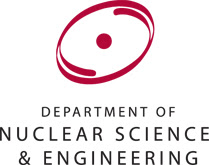Part 1 of 2 parts
Many types of water pollution such as algal blooms and plastics that foul rivers and lakes are easy to see. But other types of pollutants are not so visible. This makes their impact more dangerous. One of these invisible pollutants is uranium. It is leached into water resources from mining operation, nuclear waste sites or from natural subterranean deposits. Uranium can now be found in drinking water around the globe.
Ahmed Sami Helal is a postdoc in the Department of Nuclear Science and Engineering at MIT. He says that, in the United States, “many areas are affected by uranium contamination, including the High Plains and Central Valley aquifers, which supply drinking water to 6 million people.” This contamination is a very near and present dangers for many people.
Ju Li is the Battelle Energy Alliance Professor of Nuclear Science and Engineering and professor of materials science and engineering at MIT. He said, “Even small concentrations are bad for human health.”
A team led by Li has devised a very efficient way to remove uranium from drinking water. The new method consists of applying an electric charge to a graphene oxide foam. This allows the researchers to capture the uranium in solution by precipitating it out as a solid crystal. The foam can be reused as many as seven times without losing its electrochemical properties. Li says, “Within hours, our process can purify a large quantity of drinking water below the EPA limit for uranium.”
A new paper was published recently about this research in Advanced Materials. The first two co-authors are Helal (mentioned above) and Chao Wang who was a postdoc at MIT during the study and is now with the School of Materials Science and Engineering at Tongji University, Shanghai. Researchers from Argonne National Laboratory, Taiwan’s National Chiao Tung University, and the University of Tokyo also took part in the research. The Defense Threat Reduction Agency at the U.S. Department of Defense funded later stages of this work.
The project was launched three years ago. The goal was to find a better approach to environmental cleanup of heavy metals from mining sites. Up to the present, remediation methods for removing such metals as chromium, cadmium, arsenic, lead, mercury, radium, and uranium have proven limited and costly. Helal explained that, “These techniques are highly sensitive to organics in water, and are poor at separating out the heavy metal contaminants. So they involve long operation times, high capital costs, and at the end of extraction, generate more toxic sludge.”
To the researchers, uranium appeared to be a particularly attractive target for their work. The U.S. Geological Service and the Environmental Protection Agency (EPA) have conducted field testing and found unhealthy levels of uranium moving into reservoirs and aquifers from natural rock sources in the northeastern U.S., from ponds and pits storing old nuclear weapons and fuel in places like Hanford, Washington, and from mining activities located in many western states. This type of contamination is present in many other countries as well. An unacceptable number of the sites show uranium concentrations close to or above the EPA’s recommended ceiling of thirty parts per billion. This level is associate with kidney, cancer risk and neurobehavioral changes in human subjects.
Please read Part 2 next
Radioactive Waste 811 – MIT Researching Removal Of Uranium From Water With Graphene Oxide Foam – Part 1 of 2 Parts

